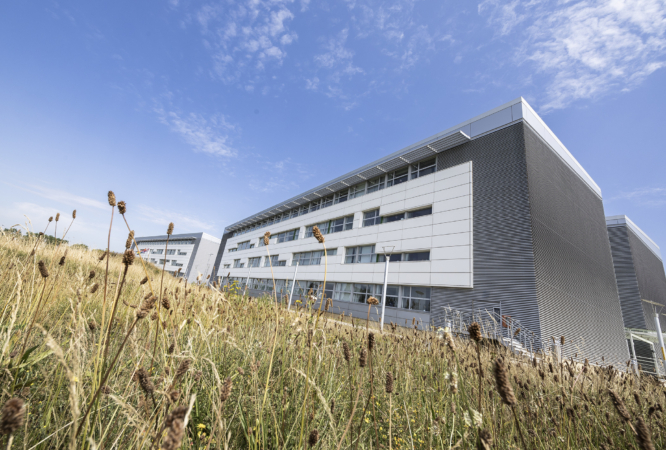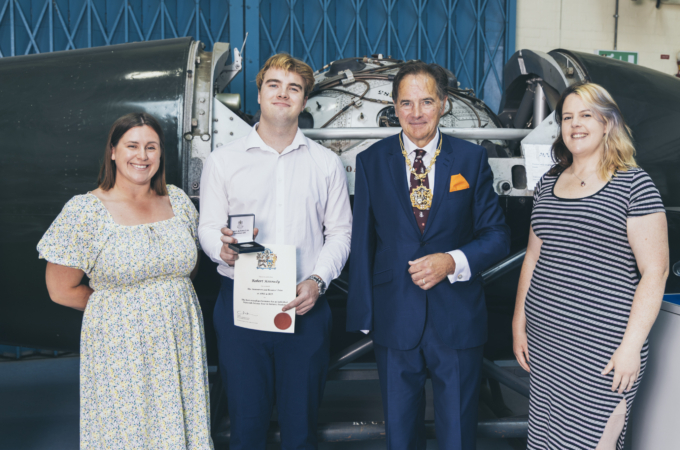Detecting the undetectable
At AWE Blacknest, experts in forensic seismology work behind the scenes to support the Comprehensive Nuclear-Test-Ban Treaty (CTBT). Their mission? To detect and verify potential nuclear tests worldwide by analysing seismic data.
Our seismologists play a key role in upholding global security and arms control through cutting-edge research, international collaboration, and advanced monitoring techniques. The CTBT revolutionised AWE’s work, leading to today’s science, simulation and modelling-based approach to nuclear weapons design and assurance.
But why is this work necessary, and what is our role in global radiation monitoring?
In the early 1950s, the rapid increase of nuclear testing led to growing concern about a nuclear arms race and radioactive fallout risks. In light of this, negotiations began between the US, Great Britain, and the Soviet Union on a new treaty to ban nuclear testing. However, early discussions showed states would only ratify such a treaty if there was a way to ensure compliance could be verified. While there were techniques to effectively monitor and detect nuclear explosions in the atmosphere, underwater and in space, scientists could not monitor these underground.
On 5th August 1963, the Limited Nuclear Test Ban Treaty was signed by the U.S., Soviet Union, and Great Britain in Moscow. The Treaty banned nuclear tests underwater, in the atmosphere and even in outer space. However, it still allowed underground tests if no radioactive debris left national borders.
During the 1960s, scientists were facing challenges distinguishing seismic waves from underground test explosions from those of earthquakes. They were also concerned that seismic signals from an underground explosion could be muffled, making it easier to evade detection. In response to these challenges, Sir William Penney, then Director of AWRE, realised the UK was well placed to grow this field. Following initial studies, the UK Government approved funding for a seismological research facility at AWE Aldermaston. In 1961, this seismological research facility was relocated to AWE Blacknest, where it is still active today.
In the 1990s, calls for a complete CTBT restarted, and countries returned to negotiations. The experience gained across the forensic monitoring field since the 1960s provided the confidence that compliance with the treaty could be monitored and enforced. During this time, new models and ways of recording data had been developed, and the understanding of forensic seismology was growing. The next critical part of creating a rigorous monitoring scheme was the ability to share collected data in real time. Scientists and engineers at Blacknest played their part in bringing about the near real-time exchange of seismic data in standardised formats.
On 26th November 1991, Britain’s last nuclear test device was fired. And half a decade later, on September 24, 1996, the Comprehensive Nuclear Test Ban Treaty was adopted at last, officially banning nuclear explosions in any environment. To date, 185 countries have signed this treaty, and we have entered an era of an almost global moratorium on nuclear testing.
We are proud to say that AWE has now spent more time monitoring for emitted radiation activity than it did recording nuclear tests through seismic data, a testament to progress in global security.Alongside another 301 certified facilities across the world, AWE Blacknest is part of the International Monitoring System (IMS) of the CTBT Organisation, and actively contributes to global monitoring efforts, facilitating essential international cooperation in the field.
After 64 years of activity, generations of AWE scientists have contributed to advancing global seismological monitoring – from building advanced recording arrays and developing sensor technology to developing new methods of processing large volumes of data. Their work has strengthened our ability to interpret seismic signals. As new challenges emerge, the Blacknest team will remain committed to ensuring continuous improvements in CTBT verification, enhancing confidence in our methods, and safeguarding the world from nuclear threats.



